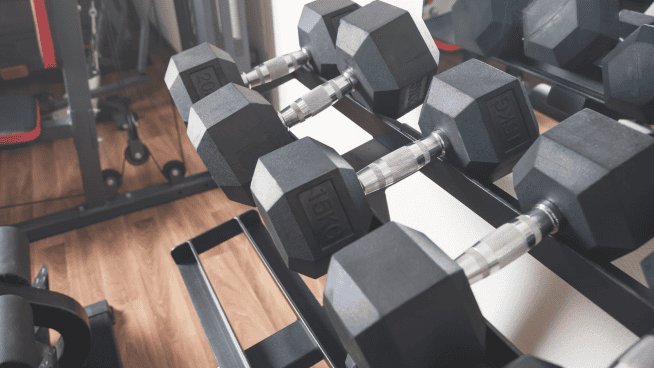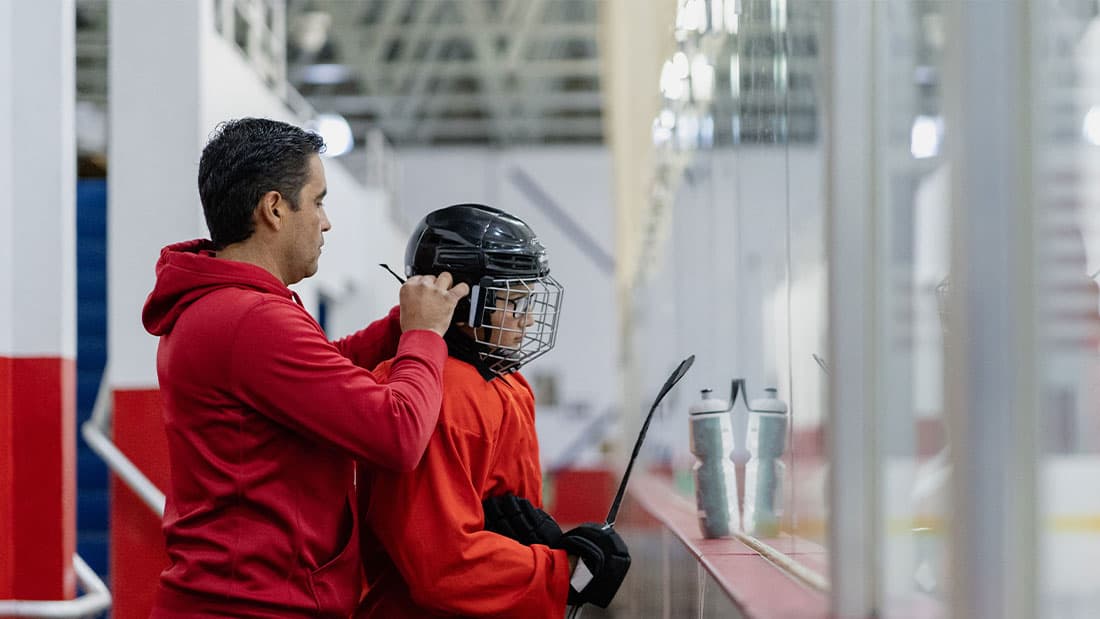Sled Pushing and Pulling. How Heavy Should You Go?
The sled is probably the most effective conditioning tool ever invented. Want to lose fat? Build muscle? Run faster? Jump higher? Rehab your knee or hip? Improve cardiovascular endurance? Anaerobic endurance? The sled can effectively and very efficiently cater to various goals for all ages and demographics. Sure, other tools can do that, but probably not to the degree and efficiency that sled dragging and pushing can.
And even though it’s just one tool, there’s a lot you can do with it. You can go heavy, light, fast, slow, push, pull, or lateral pull. While there isn’t always an absolute best way to accomplish any one thing, this article will aim to give some clarity to get the most out of your sled work.
When to Use it
No matter your goal, the sled is probably best suited for the end or near the end of a workout. And that’s because the sled requires lots of energy. A primary rule in strength and conditioning is to perform the higher coordination stuff at the beginning, such as overhead pressing, squatting, and deadlifting. Exhausting yourself at the start of a workout, then lifting heavy weights overhead is incredibly dangerous (looking at you, Crossfit).
Sometimes it can be used early in a workout for rehabilitative purposes. Reverse sled dragging is a fantastic knee warmup. Again, as long as you don’t leave yourself, sleds can be used for an effective warmup or rehabilitative exercise.
Push or Pull?
It depends. Pulling, or dragging, is going to be a knee-dominant activity. It also requires short steps. This makes dragging more effective for quad and knee strengthening and muscular development in the legs.
Lateral dragging is an underused and underrated method of conditioning with a sled. Lateral drags effectively work, you guessed it, the lateral moving muscles of the body. A lateral plane is an underserved plane of the body. Do them.
Pushing is a hip-dominant exercise. Pushing is more effective for developing speed, power, and glute development.
Which is best? All 3. No matter your sport, all three will help develop power and speed while reducing the risk of injury on the field.
How Heavy Should You Go?
Picking whether you push or pull is an easy decision based on your goals. What’s really tough is determining how heavy or light you should go. Many sleds can carry hundreds or even over a thousand pounds on them. Athletes have also been known to creatively load it up to absurd levels.
*Note that the surface matters a whole lot. A two-hundred-pound sled isn’t going to feel too heavy on an ice rink. On the flip side, it’s impossible to move one on dry sand. Just be aware that the sled slides over the surface easily. Various turfs, tiles, grass, mats, and hardwood all vary how much friction is created on the surface, dramatically changing your experience. For this article, it is assumed the athlete is using a turf, carpet, or grass-like surface, with no unusually high or low friction and level terrain.
How much weight you use depends on your body weight. All the research on sled pushing involves a percentage of your body weight. A general rule of thumb is to go lighter for speed and power development and heavier for building muscle and strength.
Speed Development
To develop speed, you’ll need to push the sled. Sled pushing best replicates running mechanics as opposed to pulling it. Further, the weight needs to be light to allow for greater speed with the pushing. Research shows it’s best to run at a max speed of 20-40% body weight for 10-20 meters. The first 10 meters are most effective for acceleration training, and meters 10-20 are best for building top-end speed. Going beyond 40% bodyweight slows the athlete down too much and doesn’t properly replicate running mechanics.
Power Development
Power refers to how fast you can accelerate yourself or a weight. Again, pushing the sled will be most appropriate. In order to produce a better acceleration, the body must produce as much force as possible into the ground. This requires a heavier weight than speed training does. It is recommended the athlete pushes the sled as fast as possible for 10 meters at 80% of their body’s weight. The study recommends roughly 8 repetitions, but more can be done if the athlete isn’t slowing down. Once the athlete does perform slower reps, that’s when you should stop and move on to strength-based exercises.
When to Pull
Where there’s a Yin, there needs to be a Yang. For athletic development, pushing is always the way to go. As we discussed, it’s ideal for developing speed and power. But every Ferarri needs a nice set of brakes too, and that’s where pulling comes in. Pulling helps balance, stabilize, and build muscle in the knee region. The recommended weights and distance isn’t well researched, but going to the point of fatigue is a broad yet effective recommendation.
In Short
Hopefully, this gives you a little direction on how to train using a sled. This is by no means an exhaustive article with a detailed program for you. Every athlete is different, and the specifics will vary a lot. But, from a thousand-foot view, these are the general recommendations.
To build:
Speed: 20-40% body weight for 10-20 meters (20 meters is best if possible at your facility). Do as many reps as possible until overall speed drops 10% from the first rep. If it takes an athlete 10 seconds on the first try, continue reps until they take 11 seconds to complete the distance. Rest as long as the athlete needs between reps.
Power/Acceleration: 80% body weight for 10 meters. Shoot for roughly 8 reps, or until the athlete loses 10% speed
To build injury resilience and quad muscle size, pulling will be best. Compliment every sled pushing session by pulling roughly the same distance you push. And mix in lateral sled dragging in every now and then. Balance!
https://journals.lww.com/nsca-jscr/Fulltext/9900/The_Effect_of_a_Heavy_Resisted_Sled_Pull_Mesocycle.13.aspx https://journals.lww.com/nsca-
jscr/Fulltext/2022/06000/Acute_Effects_of_Progressive_Sled_Loading_on.7.aspx
RECOMMENDED FOR YOU
MOST POPULAR
Sled Pushing and Pulling. How Heavy Should You Go?
The sled is probably the most effective conditioning tool ever invented. Want to lose fat? Build muscle? Run faster? Jump higher? Rehab your knee or hip? Improve cardiovascular endurance? Anaerobic endurance? The sled can effectively and very efficiently cater to various goals for all ages and demographics. Sure, other tools can do that, but probably not to the degree and efficiency that sled dragging and pushing can.
And even though it’s just one tool, there’s a lot you can do with it. You can go heavy, light, fast, slow, push, pull, or lateral pull. While there isn’t always an absolute best way to accomplish any one thing, this article will aim to give some clarity to get the most out of your sled work.
When to Use it
No matter your goal, the sled is probably best suited for the end or near the end of a workout. And that’s because the sled requires lots of energy. A primary rule in strength and conditioning is to perform the higher coordination stuff at the beginning, such as overhead pressing, squatting, and deadlifting. Exhausting yourself at the start of a workout, then lifting heavy weights overhead is incredibly dangerous (looking at you, Crossfit).
Sometimes it can be used early in a workout for rehabilitative purposes. Reverse sled dragging is a fantastic knee warmup. Again, as long as you don’t leave yourself, sleds can be used for an effective warmup or rehabilitative exercise.
Push or Pull?
It depends. Pulling, or dragging, is going to be a knee-dominant activity. It also requires short steps. This makes dragging more effective for quad and knee strengthening and muscular development in the legs.
Lateral dragging is an underused and underrated method of conditioning with a sled. Lateral drags effectively work, you guessed it, the lateral moving muscles of the body. A lateral plane is an underserved plane of the body. Do them.
Pushing is a hip-dominant exercise. Pushing is more effective for developing speed, power, and glute development.
Which is best? All 3. No matter your sport, all three will help develop power and speed while reducing the risk of injury on the field.
How Heavy Should You Go?
Picking whether you push or pull is an easy decision based on your goals. What’s really tough is determining how heavy or light you should go. Many sleds can carry hundreds or even over a thousand pounds on them. Athletes have also been known to creatively load it up to absurd levels.
*Note that the surface matters a whole lot. A two-hundred-pound sled isn’t going to feel too heavy on an ice rink. On the flip side, it’s impossible to move one on dry sand. Just be aware that the sled slides over the surface easily. Various turfs, tiles, grass, mats, and hardwood all vary how much friction is created on the surface, dramatically changing your experience. For this article, it is assumed the athlete is using a turf, carpet, or grass-like surface, with no unusually high or low friction and level terrain.
How much weight you use depends on your body weight. All the research on sled pushing involves a percentage of your body weight. A general rule of thumb is to go lighter for speed and power development and heavier for building muscle and strength.
Speed Development
To develop speed, you’ll need to push the sled. Sled pushing best replicates running mechanics as opposed to pulling it. Further, the weight needs to be light to allow for greater speed with the pushing. Research shows it’s best to run at a max speed of 20-40% body weight for 10-20 meters. The first 10 meters are most effective for acceleration training, and meters 10-20 are best for building top-end speed. Going beyond 40% bodyweight slows the athlete down too much and doesn’t properly replicate running mechanics.
Power Development
Power refers to how fast you can accelerate yourself or a weight. Again, pushing the sled will be most appropriate. In order to produce a better acceleration, the body must produce as much force as possible into the ground. This requires a heavier weight than speed training does. It is recommended the athlete pushes the sled as fast as possible for 10 meters at 80% of their body’s weight. The study recommends roughly 8 repetitions, but more can be done if the athlete isn’t slowing down. Once the athlete does perform slower reps, that’s when you should stop and move on to strength-based exercises.
When to Pull
Where there’s a Yin, there needs to be a Yang. For athletic development, pushing is always the way to go. As we discussed, it’s ideal for developing speed and power. But every Ferarri needs a nice set of brakes too, and that’s where pulling comes in. Pulling helps balance, stabilize, and build muscle in the knee region. The recommended weights and distance isn’t well researched, but going to the point of fatigue is a broad yet effective recommendation.
In Short
Hopefully, this gives you a little direction on how to train using a sled. This is by no means an exhaustive article with a detailed program for you. Every athlete is different, and the specifics will vary a lot. But, from a thousand-foot view, these are the general recommendations.
To build:
Speed: 20-40% body weight for 10-20 meters (20 meters is best if possible at your facility). Do as many reps as possible until overall speed drops 10% from the first rep. If it takes an athlete 10 seconds on the first try, continue reps until they take 11 seconds to complete the distance. Rest as long as the athlete needs between reps.
Power/Acceleration: 80% body weight for 10 meters. Shoot for roughly 8 reps, or until the athlete loses 10% speed
To build injury resilience and quad muscle size, pulling will be best. Compliment every sled pushing session by pulling roughly the same distance you push. And mix in lateral sled dragging in every now and then. Balance!
https://journals.lww.com/nsca-jscr/Fulltext/9900/The_Effect_of_a_Heavy_Resisted_Sled_Pull_Mesocycle.13.aspx https://journals.lww.com/nsca-
jscr/Fulltext/2022/06000/Acute_Effects_of_Progressive_Sled_Loading_on.7.aspx











